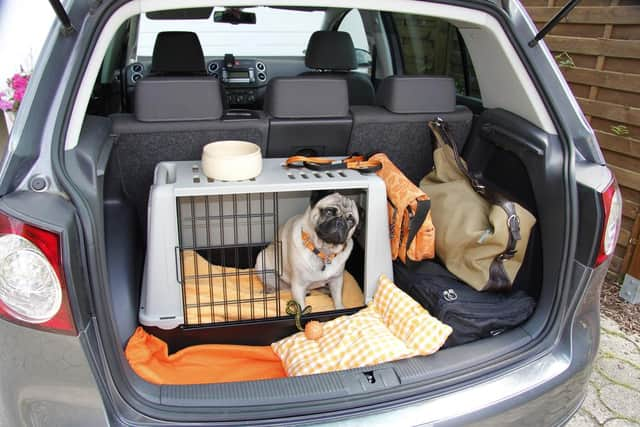1 in 3 pet owners risking a huge fine for ignoring this safety rule
and live on Freeview channel 276
Millions of dog owners are risking a fine of up to £5,000 when travelling with their pet by ignoring the Highway Code.
They are also risking their own safety and that of their pet as well as potentially invalidating their car insurance by failing to follow the rules around transporting animals.
Advertisement
Advertisement
As millions of families prepare for a summer getaway, a poll of pet owners found that more than a third (37 per cent) - equivalent to 5.5 million - admit to driving without properly securing their dog.


Rule 57 of the Highway Code states: “When in a vehicle make sure dogs or other animals are suitably restrained so they cannot distract you while you are driving or injure you, or themselves, if you stop quickly.”
The research by Direct Line Pet Insurance found that 11 per cent of drivers had been distracted by their pet while driving.
Driving while distracted is punishable by an on-the-spot fine of £100, but if your actions are deemed to be careless driving that can rise as high as £5,000. There’s also a good chance your insurance won’t pay out in an crash caused by your pet distracting you.
Advertisement
Advertisement
The Code says that dogs should be restrained in the car using a seat belt harness, pet carrier, dog cage or dog guard. However, the research found 14 per cent of drivers leave their pet roaming in the back seat, eight per cent leave them in the boot without a dog guard, six per cent travel with them on someone’s lap and five per cent let them sit unrestrained in the front passenger seat.


The study also found that one in five drivers let their dog stick its head out of the window while the car was moving, and almost 1.4m (nine per cent) had left their dog in the car on a hot day, despite the well-know danger that poses.
Madeline Pike, veterinary nurse for Direct Line Pet Insurance said: “It’s great that so many dogs are taken on car journeys and we expect that to rise this summer as staycations remain popular. But it’s also really important to remember to secure dogs safely in a car, not just for their own health and wellbeing but also to ensure they don’t distract the driver.
“Travelling with dogs isn’t always easy, so if you’re planning a long trip, make sure your dog is used to being in the car first, you have a suitable restraint for them and have planned regular stops. It is also vital that dogs are never left in a car on a hot day, as this can be extremely dangerous for them.”
Tips for safe and stress-free travels with your pet
Advertisement
Advertisement
- Invest in suitable safety equipment: There are many ways of safely and inexpensively securing a pet in a car. The most popular options are crates, gates and harnesses, all of which allow the pet some freedom of movement without posing a safety risk
- Keep your dog cool: Heat exhaustion can be a serious threat to the health of your pet, so never leave them alone in a vehicle for any amount of time and always ensure they have access to fresh air. Installing shades on windows can also prevent strong sunlight heating up the car
- Keep them safe: While it may look fun, you should never let your pet ride with their head sticking out of the window, as there is a chance that they could fall out of the vehicle or be struck by a passing object
- Schedule frequent breaks on long journeys: Pets aren’t able to tell you that they’re thirsty or need a toilet break, so ensure that you’re able to safely stop at regular intervals to allow them to drink, go to the toilet and stretch their legs
Advertisement
Advertisement
- Get your pet used to travelling: Without regular exposure to car travel pets can get nervous when going on a long journey. Wherever possible, make the car comfortable by bringing a favourite toy or blanket, and comfort your pet if they show signs of distress. Car sickness can be common, especially in puppies, so if this affects your pet try not to travel with them on a full stomach and aim to take longer, more frequent breaks on the journey